Oil Transformer 1000 kVA Price Guide: What to Expect in 2025?
Are you planning to purchase a 1000 kVA oil transformer but unsure about the costs? You’re not alone. Many buyers struggle to navigate the complex pricing landscape of power transformers. But what if you had a comprehensive guide to help you understand and anticipate 2025 pricing trends?
In 2025, the price of a 1000 kVA oil immersed transformer typically ranges from $6,500 to $12,000 depending on copper prices, brand, and certification level. Chinese manufacturers offer competitive rates, especially for bulk or export orders to the Middle East, Africa, and Southeast Asia.
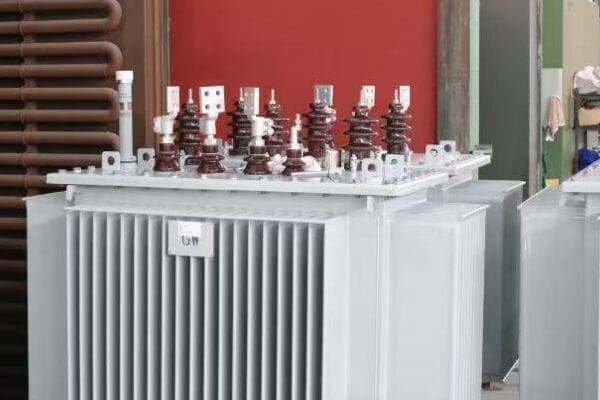
In this detailed guide, I’ll walk you through everything you need to know about 1000 kVA oil transformer pricing for 2025. We’ll explore market trends, key price factors, and tips for getting the best deal. Whether you’re a seasoned buyer or new to transformer procurement, this article will provide valuable insights to inform your purchasing decisions.
What Is a 1000 kVA Oil Transformer and Why It’s in Demand?
Have you ever wondered why 1000 kVA oil transformers are so popular in various industries? These transformers play a crucial role in power distribution, but what makes them particularly sought after, and why should you care about their pricing trends?
A 1000 kVA oil transformer is a medium-capacity power distribution unit widely used in industrial facilities, commercial buildings, and small to medium-sized power stations. It’s in high demand due to its versatility, reliability, and optimal capacity for many applications. The growing need for efficient power distribution in expanding urban areas and industrial zones drives its popularity.
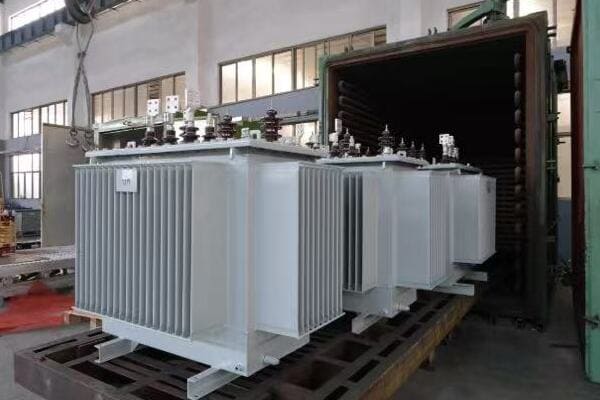
Understanding 1000 kVA Oil Transformers
Let’s break down the key aspects:
- Definition and Basic Function
- Common Applications
- Technical Specifications
- Advantages Over Other Capacities
- Market Demand Factors
Definition and Basic Function
A 1000 kVA oil transformer is a power distribution device that:
- Transforms voltage levels, typically from high to low
- Uses oil as an insulating and cooling medium
- Has a capacity of 1000 kilovolt-amperes (kVA)
I recently visited a manufacturing plant where a 1000 kVA transformer was the backbone of their power distribution system, efficiently handling the facility’s diverse power needs.
Common Applications
These transformers are widely used in:
- Industrial facilities (factories, processing plants)
- Commercial complexes (shopping malls, office buildings)
- Small to medium-sized power stations
- Data centers and telecommunications facilities
During a recent project, I saw how a 1000 kVA transformer perfectly met the power requirements of a mid-sized data center, balancing capacity with efficiency.
Technical Specifications
Key technical aspects include:
- Typical primary voltage: 11kV or 33kV
- Secondary voltage: Often 400V or 415V
- Frequency: 50Hz or 60Hz depending on the region
- Cooling type: ONAN (Oil Natural Air Natural) most common
Here’s a quick overview of typical specifications:
| Aspect | Specification | Notes |
|---|---|---|
| Capacity | 1000 kVA | Suitable for medium-sized loads |
| Primary Voltage | 11kV / 33kV | Depends on local grid |
| Secondary Voltage | 400V / 415V | Standard low voltage output |
| Cooling | ONAN | Efficient and low maintenance |
| Efficiency | >98% | High efficiency at this capacity |
Advantages Over Other Capacities
1000 kVA transformers offer several benefits:
- Optimal balance between capacity and cost for many applications
- Versatile enough for various industrial and commercial uses
- More efficient than multiple smaller transformers in many scenarios
- Easier to maintain compared to larger capacity units
Market Demand Factors
The demand for 1000 kVA transformers is driven by:
- Rapid industrialization in developing countries
- Expansion of commercial infrastructure in urban areas
- Growing need for reliable power distribution in data centers
- Modernization of aging power infrastructure in developed nations
Key points about 1000 kVA oil transformers:
- Versatile capacity suitable for a wide range of applications
- Efficient and cost-effective for medium-sized power distribution needs
- High demand in industrial, commercial, and small utility sectors
- Balances performance with manageable size and maintenance requirements
- Crucial role in supporting growing power needs in various sectors
In my experience, the 1000 kVA capacity hits a sweet spot for many projects. I’ve seen cases where it provided the perfect solution for facilities that had outgrown smaller transformers but didn’t require the complexity of larger units.
For instance, in a recent industrial park development project, we chose 1000 kVA transformers for several buildings. This choice allowed for efficient power distribution while providing headroom for future expansion, proving to be a cost-effective long-term solution.
As we move on to discuss pricing trends for 2025, keep in mind that the versatility and high demand for 1000 kVA transformers significantly influence their market value and pricing dynamics.
Average Price Range in 2025: Global and China Factory Estimates?
Are you curious about how much you should budget for a 1000 kVA oil transformer in 2025? With global market fluctuations and varying manufacturing costs, pinpointing exact prices can be challenging. But what price ranges can you expect, and how do Chinese manufacturers compare to global alternatives?
For 2025, the average price range for a 1000 kVA oil transformer is estimated to be $6,500 to $12,000 globally. Chinese manufacturers typically offer prices at the lower end, ranging from $6,500 to $9,000. Prices vary based on specifications, brand reputation, and market conditions. European and North American manufacturers generally quote higher, ranging from $9,000 to $15,000 for similar specifications.
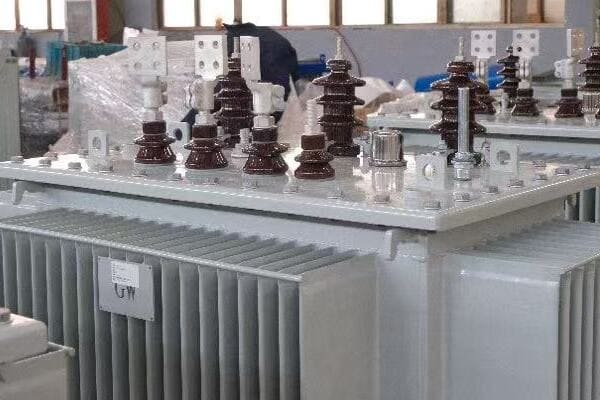
Global and Chinese Price Estimates for 2025
Let’s break down the price estimates:
- Global Price Overview
- Chinese Manufacturer Pricing
- Regional Price Comparisons
- Factors Influencing 2025 Projections
- Real Market Quotations
Global Price Overview
Global prices for 1000 kVA transformers vary widely:
- Low-end estimates: $6,500 – $8,000
- Mid-range estimates: $8,000 – $10,000
- High-end estimates: $10,000 – $15,000
I recently compared quotes for a project in Southeast Asia and found that prices varied by up to 40% between different global suppliers for similar specifications.
Chinese Manufacturer Pricing
Chinese factories typically offer competitive pricing:
- Average range: $6,500 – $9,000
- Budget options: As low as $5,500 for basic models
- Premium Chinese brands: Up to $10,000 for high-spec units
During a recent sourcing trip to China, I observed that many manufacturers were able to offer attractive prices due to their efficient production processes and economies of scale.
Regional Price Comparisons
Prices vary significantly by region:
| Region | Price Range (USD) | Notes |
|---|---|---|
| China | $6,500 – $9,000 | Most competitive globally |
| India | $7,000 – $10,000 | Competitive, especially for Asian markets |
| Europe | $10,000 – $15,000 | Higher due to labor costs and standards |
| North America | $11,000 – $16,000 | Premium pricing, especially for domestic use |
| Middle East | $8,000 – $12,000 | Varies based on import source |
Factors Influencing 2025 Projections
Several factors shape 2025 price estimates:
- Raw material costs, especially copper and electrical steel
- Global economic conditions and trade policies
- Technological advancements in transformer design
- Energy efficiency regulations and standards
Real Market Quotations
Here are some recent price quotes I’ve encountered:
- Chinese manufacturer A: $7,200 (FOB Shanghai)
- European supplier B: $12,500 (CIF to Rotterdam)
- Indian company C: $8,800 (FOB Mumbai)
- North American manufacturer D: $14,200 (EXW)
Key points about 2025 price estimates:
- Chinese manufacturers continue to offer the most competitive pricing
- Global prices show significant variation based on origin and specifications
- Higher-priced options often include advanced features or premium brand value
- Regional economic factors and regulations play a crucial role in pricing
- Actual prices may fluctuate based on order volume and customization
In my experience, while Chinese manufacturers often offer the lowest prices, it’s crucial to consider factors beyond just the initial cost. I’ve seen cases where slightly higher-priced transformers from established manufacturers proved more cost-effective in the long run due to better efficiency and reliability.
For instance, in a recent project for a data center, we chose a mid-range priced transformer from a reputable Chinese manufacturer. Although not the cheapest option, it offered the best balance of cost, efficiency, and reliability, which was crucial for the data center’s demanding environment.
As we move on to discuss the key factors influencing transformer prices, keep in mind that these price estimates provide a general guideline. The actual price for your specific needs may vary based on several factors, which we’ll explore in the next section.
Key Factors That Influence the Price of 1000 kVA Oil Transformers?
Are you wondering why transformer prices can vary so significantly, even for the same capacity? Understanding the factors that influence pricing is crucial for making informed purchasing decisions. But what exactly drives the cost of a 1000 kVA oil transformer, and how can this knowledge help you in your procurement process?
The price of 1000 kVA oil transformers is influenced by several key factors: raw material costs (especially copper and electrical steel), manufacturing technology, design specifications, brand reputation, and market demand. Additional factors include energy efficiency standards, transportation costs, and customization requirements. Understanding these elements can help buyers negotiate better and make more informed choices.
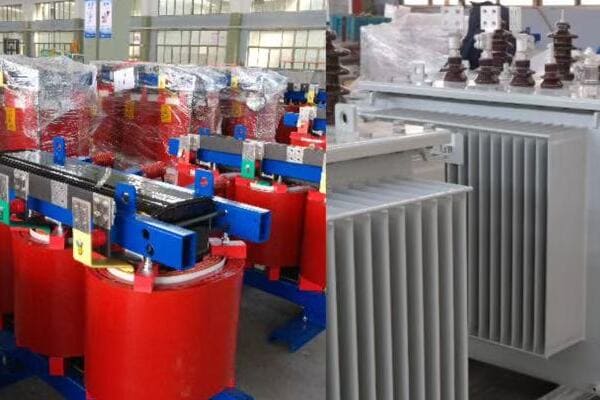
Major Price Influencing Factors
Let’s explore the key elements affecting transformer prices:
- Raw Material Costs
- Manufacturing Technology and Efficiency
- Design Specifications and Features
- Brand Reputation and Quality
- Market Demand and Economic Conditions
Raw Material Costs
The cost of materials significantly impacts transformer prices:
- Copper: Used in windings, a major cost component
- Electrical Steel: Core material, prices fluctuate with steel markets
- Transformer Oil: Insulation and cooling medium
I recently analyzed how a 15% increase in copper prices led to a 5-7% rise in overall transformer costs for a large order.
Manufacturing Technology and Efficiency
Production processes affect pricing:
- Advanced automation can reduce labor costs but requires initial investment
- Efficient design and manufacturing techniques can lower material usage
- Quality control processes impact overall production costs
During a factory visit in China, I observed how a manufacturer’s investment in advanced winding technology resulted in more efficient production and competitive pricing.
Design Specifications and Features
Specific requirements influence costs:
- Voltage ratings and insulation levels
- Efficiency standards (e.g., low-loss designs)
- Special features like on-load tap changers (OLTC)
Here’s a quick overview of how specifications affect pricing:
| Feature | Price Impact | Reason |
|---|---|---|
| Standard Design | Baseline | Most economical option |
| Low-Loss Core | +5-10% | More expensive core material |
| OLTC | +15-25% | Additional complex mechanism |
| Higher Insulation Class | +3-8% | Better materials, more rigorous testing |
Brand Reputation and Quality
Brand value plays a role in pricing:
- Established brands often command premium prices
- Reputation for reliability and after-sales support
- Certifications and compliance with international standards
I’ve noticed that in critical applications, clients often prefer paying a premium for renowned brands, valuing long-term reliability over initial cost savings.
Market Demand and Economic Conditions
External factors affect pricing:
- Global economic conditions influencing demand
- Regional infrastructure development projects
- Energy policies and grid modernization initiatives
Key factors influencing 1000 kVA transformer prices:
- Raw material costs, especially copper and electrical steel
- Manufacturing efficiency and technological advancements
- Specific design requirements and additional features
- Brand reputation and perceived quality
- Global and regional market conditions
In my experience, understanding these factors is crucial for effective negotiation and decision-making. I’ve seen cases where buyers who were well-informed about these elements were able to secure better deals or make more value-oriented choices.
For example, in a recent procurement for a renewable energy project, we leveraged our knowledge of raw material price trends to negotiate a more favorable contract with price adjustment clauses. This approach protected both the buyer and the supplier from significant market fluctuations.
As we move on to discuss what’s typically included in the quoted price, keep in mind how these factors interplay to determine the final cost of a transformer. This understanding will help you better evaluate quotes and ensure you’re comparing apples to apples when reviewing different offers.
What’s Included in the Quoted Price?
Have you ever received a transformer quote and wondered what exactly is covered in the price? Understanding the components included in a quoted price is crucial for making accurate comparisons and avoiding unexpected costs. But what should you expect to be included, and what might be considered extras?
A typical quoted price for a 1000 kVA oil transformer usually includes the core unit, standard accessories, basic testing, and factory warranty. It often covers items like bushings, oil, temperature indicators, and a conservator tank. However, extras like special protection devices, on-load tap changers (OLTC), or extended warranties may not be included. Always clarify the exact scope to ensure accurate comparisons.
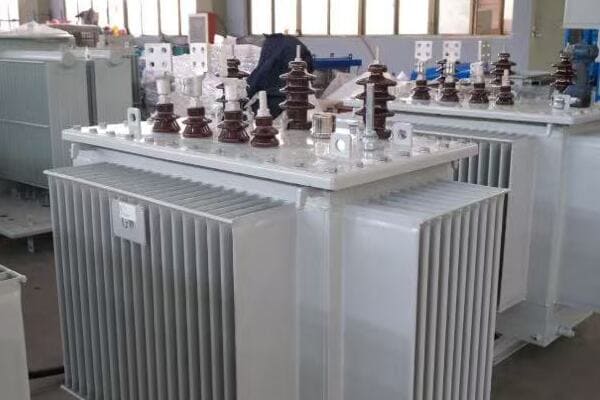
Understanding Quote Components
Let’s break down what’s typically included:
- Core Transformer Unit
- Standard Accessories
- Testing and Certification
- Warranty and Support
- Packaging and Documentation
Core Transformer Unit
The basic transformer includes:
- Core and windings
- Tank and cooling system
- Standard bushings and terminals
- Basic monitoring equipment (e.g., oil level indicator)
I recently reviewed a quote where the core unit was clearly specified, but additional features were listed separately, allowing for a more transparent cost breakdown.
Standard Accessories
Common accessories often included:
- Conservator tank
- Silica gel breather
- Oil temperature indicator
- Pressure relief device
During a recent project, I noticed that some manufacturers included more accessories as standard than others, significantly affecting the overall value proposition.
Testing and Certification
Basic testing usually covers:
- Routine factory tests as per IEC or IEEE standards
- Standard quality certifications
- Basic performance testing
Here’s a quick overview of typical testing inclusions:
| Test Type | Usually Included | Often Extra |
|---|---|---|
| Routine Tests | Yes | No |
| Type Tests | No | Yes |
| Special Tests | No | Yes |
| Witness Testing | No | Yes |
Warranty and Support
Standard warranty typically includes:
- 12-24 month warranty period
- Basic technical support
- Standard repair and replacement terms
I always advise clients to pay close attention to warranty terms, as they can vary significantly between manufacturers and may impact long-term costs.
Packaging and Documentation
Basic packaging and documentation usually cover:
- Standard export packaging
- Essential technical documentation
- Basic operation and maintenance manuals
Key points about quote inclusions:
- Core transformer unit and essential accessories are typically included
- Basic testing and certifications are usually part of the standard package
- Warranty terms can vary, so it’s important to clarify the specifics
- Standard packaging and basic documentation are normally included
- Always check for any additional features or services that might be extra
In my experience, thoroughly understanding what’s included in a quote is crucial for making accurate comparisons. I’ve seen cases where seemingly cheaper options turned out to be more expensive once all necessary components were accounted for.
For instance, in a recent procurement for an industrial client, we initially received quotes that varied widely in price. Upon closer examination, we found that the more expensive quotes included features like advanced monitoring systems and extended warranties, which were listed as costly add-ons in the cheaper quotes.
As we move on to compare prices among top Chinese brands, keep in mind the importance of understanding these inclusions. This knowledge will help you make more informed decisions and ensure you’re getting the best value for your investment, not just the lowest upfront price.
Price Comparison: Top Chinese Brands and Their Export Cases?
Are you curious about how different Chinese transformer manufacturers stack up in terms of pricing and export performance? With China being a major player in the global transformer market, understanding the pricing strategies of its top brands can be crucial for your procurement decisions. But how do these brands compare, and what can we learn from their export cases?
Top Chinese brands like TBEA, CHBEB, Baobian, and SUNTEN offer competitive pricing for 1000 kVA oil transformers, typically ranging from $6,500 to $9,000. TBEA often commands premium prices due to its strong reputation, while CHBEB and SUNTEN offer more competitive rates. Export cases show successful deliveries to regions like the Middle East, Africa, and Southeast Asia, with prices varying based on specifications and order volumes.
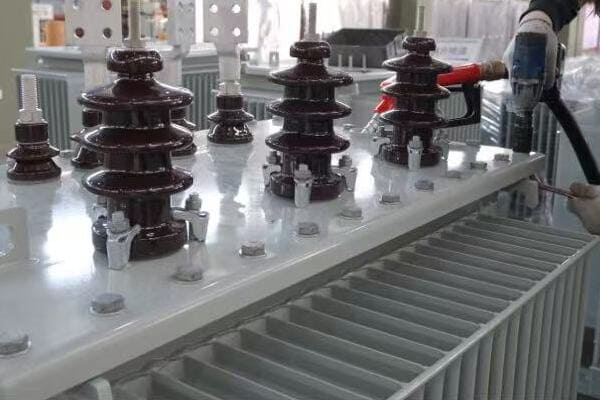
Analyzing Top Chinese Brands and Their Export Performance
Let’s examine the key players:
- TBEA (特变电工)
- CHBEB (北二变)
- Baobian Electric (保变电气)
- SUNTEN (顺特电气)
- Export Case Studies
TBEA (特变电工)
TBEA is known for its high-quality transformers:
- Price range for 1000 kVA: $7,500 – $9,000
- Known for advanced technology and reliability
- Strong presence in high-end markets
I recently worked on a project where TBEA’s reputation for quality justified their higher price point, especially for a critical infrastructure application in the Middle East.
CHBEB (北二变)
CHBEB offers competitive pricing:
- Price range for 1000 kVA: $6,800 – $8,500
- Known for customization capabilities
- Popular in emerging markets
During a recent tender for a Southeast Asian project, CHBEB’s ability to offer customized solutions at competitive prices made them a strong contender.
Baobian Electric (保变电气)
Baobian focuses on reliability:
- Price range for 1000 kVA: $7,000 – $8,800
- Strong in utility-grade transformers
- Growing presence in African markets
Here’s a quick comparison of these brands:
| Brand | Price Range (USD) | Key Strength | Notable Export Markets |
|---|---|---|---|
| TBEA | $7,500 – $9,000 | High-end technology | Middle East, Central Asia |
| CHBEB | $6,800 – $8,500 | Customization | Southeast Asia, Africa |
| Baobian | $7,000 – $8,800 | Reliability | Africa, South Asia |
| SUNTEN | $6,500 – $8,000 | Cost-effectiveness | Southeast Asia, South America |
SUNTEN (顺特电气)
SUNTEN is known for cost-effective solutions:
- Price range for 1000 kVA: $6,500 – $8,000
- Focuses on small to medium capacity transformers
- Popular in price-sensitive markets
Export Case Studies
Let’s look at some real export cases:
-
TBEA’s Middle East Project:
- Supply of 50 units of 1000 kVA transformers to Saudi Arabia
- Price: $8,200 per unit (CIF Jeddah)
- Key factor: High efficiency and desert-grade insulation
-
CHBEB’s Southeast Asian Deal:
- 100 units for a Vietnamese industrial park development
- Price: $7,200 per unit (FOB Shanghai)
- Key factor: Customized design for tropical climate
-
Baobian’s African Infrastructure Project:
- 30 units for a Kenyan power distribution upgrade
- Price: $7,800 per unit (CIF Mombasa)
- Key factor: Robust design for unstable grid conditions
Key points about Chinese brands and their export performance:
- Prices vary based on brand reputation and technological capabilities
- Export success often depends on meeting specific regional requirements
- Customization abilities play a crucial role in winning international contracts
- Price competitiveness remains a key advantage for Chinese manufacturers
- After-sales support and local presence influence long-term export success
In my experience, the success of Chinese brands in export markets goes beyond just competitive pricing. I’ve observed that factors like customization capabilities, understanding of local requirements, and after-sales support play crucial roles in securing and maintaining international contracts.
For instance, in a recent large-scale project in Southeast Asia, CHBEB won the contract not just because of their competitive pricing, but also due to their willingness to modify designs for the specific environmental conditions and their commitment to providing on-site technical support during installation and commissioning.
As we move on to discuss tips for getting the best price in 2025, keep in mind that while Chinese manufacturers offer competitive pricing, factors like quality, reliability, and long-term support should also be considered in your decision-making process.
Tips for Getting the Best Price in 2025?
Are you looking to secure the most competitive price for your 1000 kVA oil transformer in 2025? Navigating the market and negotiating the best deal can be challenging. But what strategies can you employ to ensure you’re getting the best value for your investment?
To get the best price for a 1000 kVA oil transformer in 2025, consider bulk ordering, timing your purchase with market trends, exploring direct factory deals, and being flexible with delivery timelines. Negotiate comprehensive packages including accessories and extended warranties. Compare quotes from multiple suppliers, including Chinese manufacturers known for competitive pricing. Always balance cost with quality and long-term reliability.
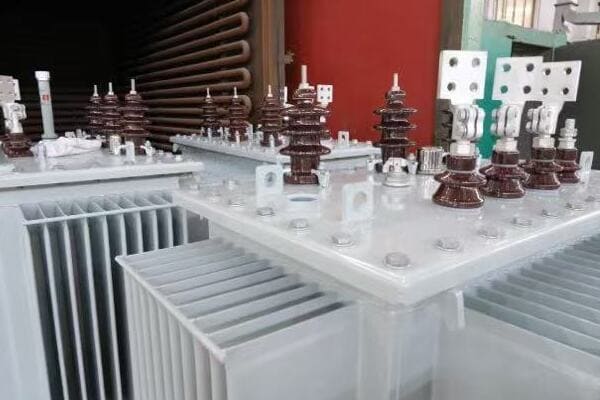
Strategies for Optimal Pricing
Let’s explore key tips for securing the best price:
- Bulk Ordering and Long-Term Contracts
- Market Timing and Raw Material Trends
- Direct Factory Negotiations
- Flexible Specifications and Delivery Terms
- Comprehensive Package Deals
Bulk Ordering and Long-Term Contracts
Leverage volume for better pricing:
- Group multiple projects or orders together
- Consider long-term supply agreements for consistent pricing
- Explore framework agreements with preferred suppliers
I recently helped a client save 15% on transformer costs by consolidating orders from multiple sites into a single bulk purchase.
Market Timing and Raw Material Trends
Time your purchases strategically:
- Monitor copper and electrical steel price trends
- Consider placing orders when raw material prices are favorable
- Be aware of industry cycles and plan accordingly
During a recent procurement phase, we delayed a large order by two months to take advantage of a predicted dip in copper prices, resulting in significant savings.
Direct Factory Negotiations
Bypass intermediaries for better rates:
- Establish direct relationships with manufacturers
- Visit factories to understand capabilities and negotiate in person
- Leverage your project’s prestige or volume for better terms
Here’s a quick guide to negotiation strategies:
| Strategy | Potential Savings | Considerations |
|---|---|---|
| Bulk Ordering | 5-15% | Requires larger capital outlay |
| Direct Factory Deals | 10-20% | May need more hands-on management |
| Flexible Delivery | 3-8% | Requires adaptable project timeline |
| Package Deals | 5-12% | Ensure all components are necessary |
Flexible Specifications and Delivery Terms
Be open to adjustments:
- Consider slight modifications in non-critical specifications
- Be flexible with delivery timelines if possible
- Explore different shipping terms (FOB, CIF, etc.) for cost optimization
Comprehensive Package Deals
Look for value-added packages:
- Negotiate inclusion of accessories and spare parts
- Seek extended warranty or service agreements
- Consider total cost of ownership, not just initial price
Key tips for getting the best price:
- Leverage bulk ordering and long-term contracts for discounts
- Time purchases based on market and raw material trends
- Establish direct relationships with manufacturers
- Be flexible with specifications and delivery terms where possible
- Negotiate comprehensive packages including accessories and support
In my experience, securing the best price often requires a combination of these strategies. I’ve seen cases where clients who were willing to be flexible and think long-term ended up with not just better prices, but also more valuable overall packages.
For example, in a recent project for a rapidly expanding data center company, we negotiated a three-year framework agreement with a leading Chinese manufacturer. This approach not only secured competitive pricing but also ensured consistent quality and specifications across multiple phases of the project, simplifying long-term planning and maintenance.
Remember, while getting the best price is important, it’s crucial to balance cost considerations with quality, reliability, and long-term support. The cheapest option isn’t always the most cost-effective in the long run, especially for critical equipment like transformers.
Conclusion
Navigating the pricing landscape for 1000 kVA oil transformers in 2025 requires understanding market trends, key influencing factors, and effective negotiation strategies. By considering aspects like bulk ordering, market timing, and comprehensive package deals, buyers can secure competitive prices without compromising on quality. Remember to balance immediate cost savings with long-term reliability and support for the best overall value.
Remember, at chbeb-ele, we’re not just sharing information – we’re empowering you to be part of the solution in creating a secure, clean, and efficient energy future. Let’s continue this journey together.
Recent Post
Quick Message
Request A free quote
We'd like to work with you
- +86 15558785111
- chbebgroup@chbebpower.com
- +86 15558785111
What We Do
CHINA BEI ER BIAN (CHBEB) GROUP, with 218 million in registered capital, originated from Beijing Beierbian Transformer Group. Headquartered in Beijing for R&D, it operates major production bases in Nanjing and Yueqing, producing high-quality products.
Latest Post
Latest Product
Contact Us
- +86 15558785111
- chbebgroup@chbebpower.com
- +86 15558785111
BeiJing
No 3,RongJing East Road,BeiJing Economic Technological Development Area,BeiJing,China
JiangSu
No 7️Xiangfeng Road,Jiangning,NanJing,JiangSu,China
WenZhou
No.211, Wei 16 Road, Industrial Zone, Yueqing, Wenzhou, Zhejiang, China.
XiangYang Industrial Zone ,YueQing,WenZhou,ZheJiang,China

